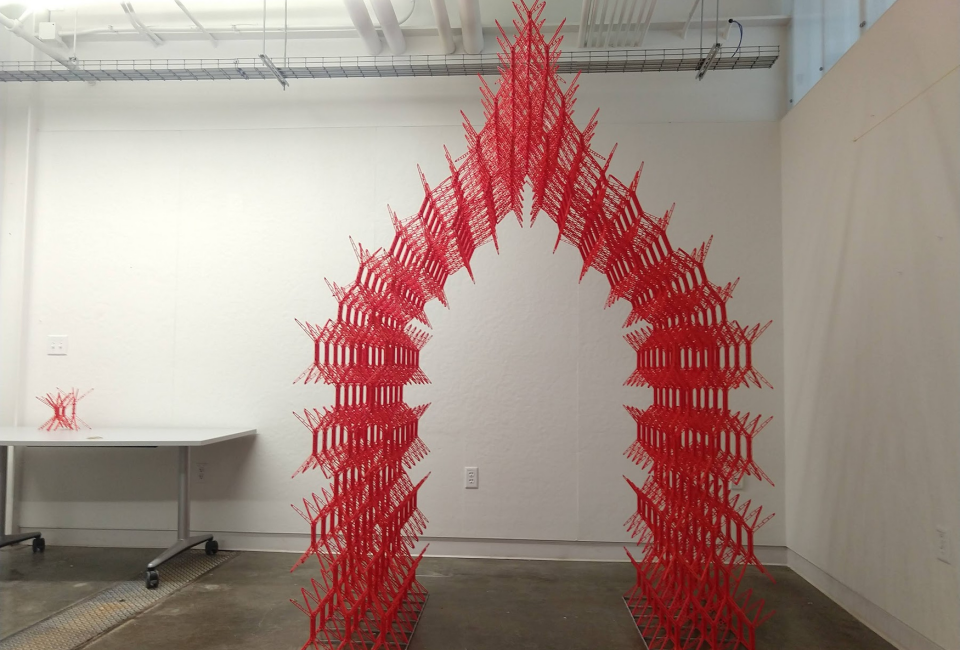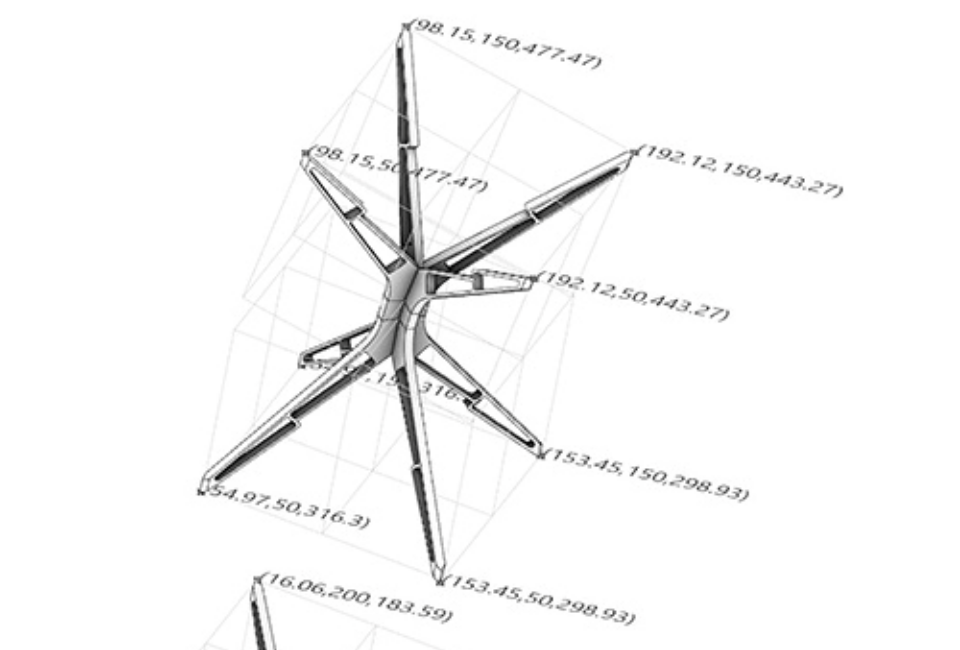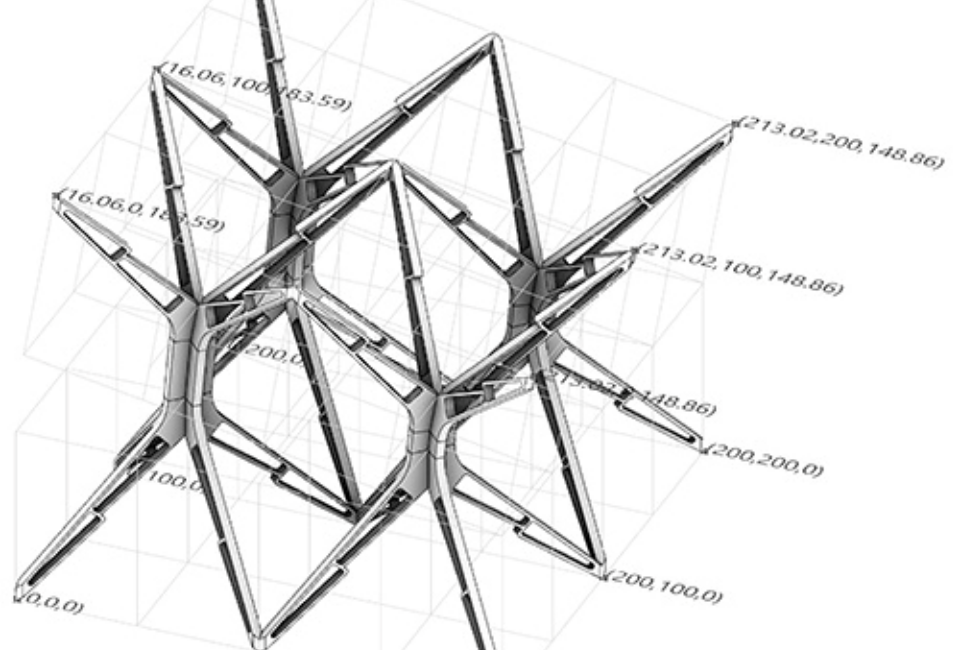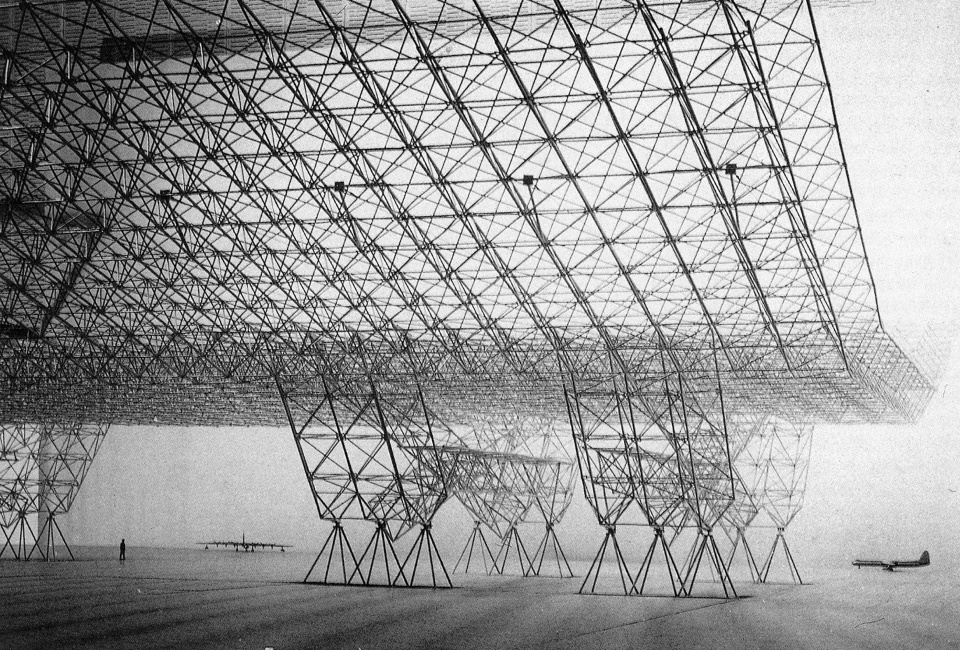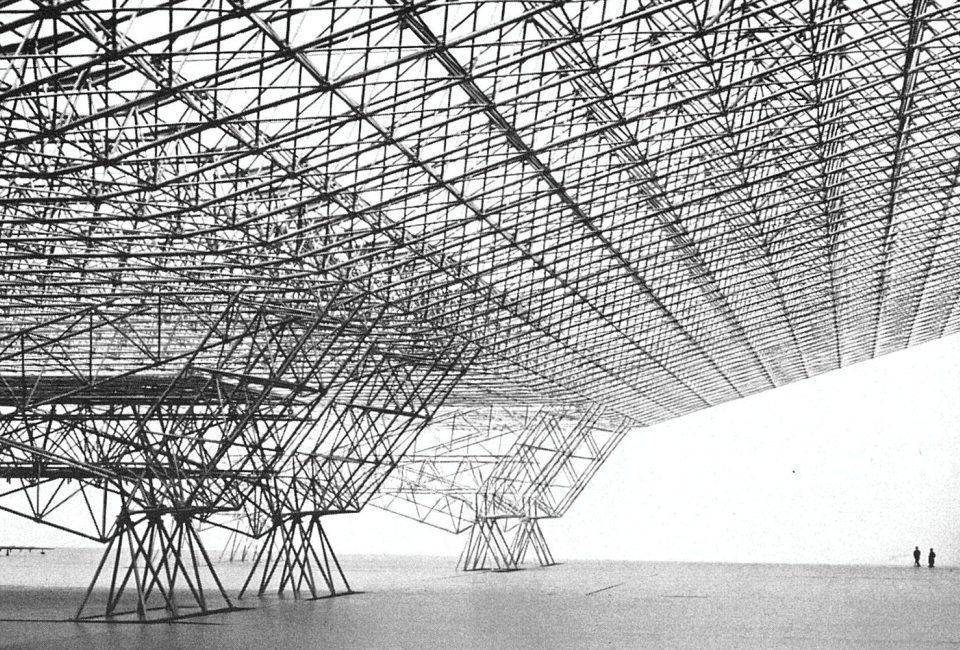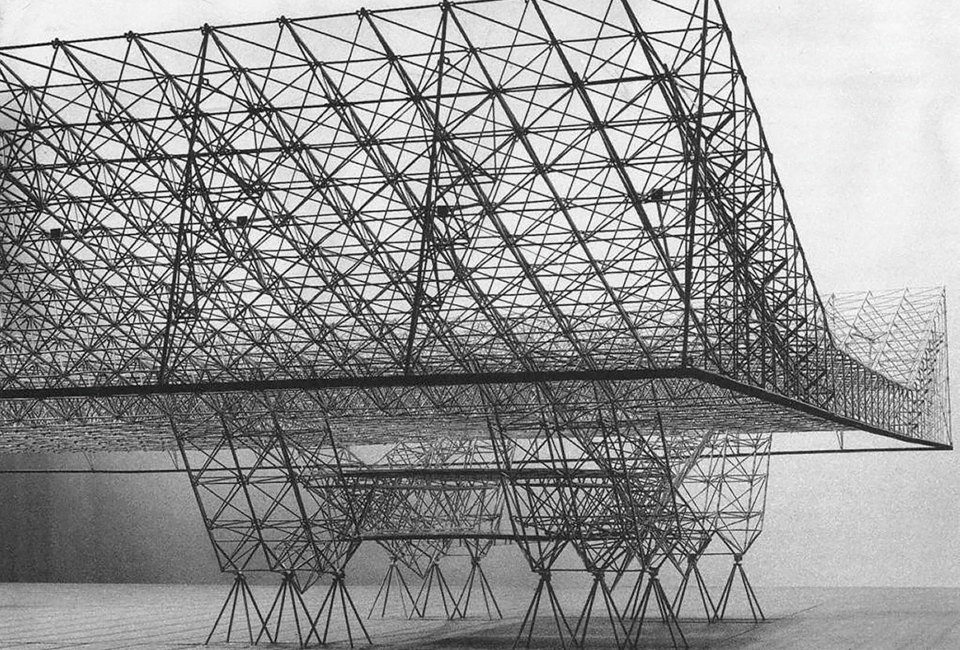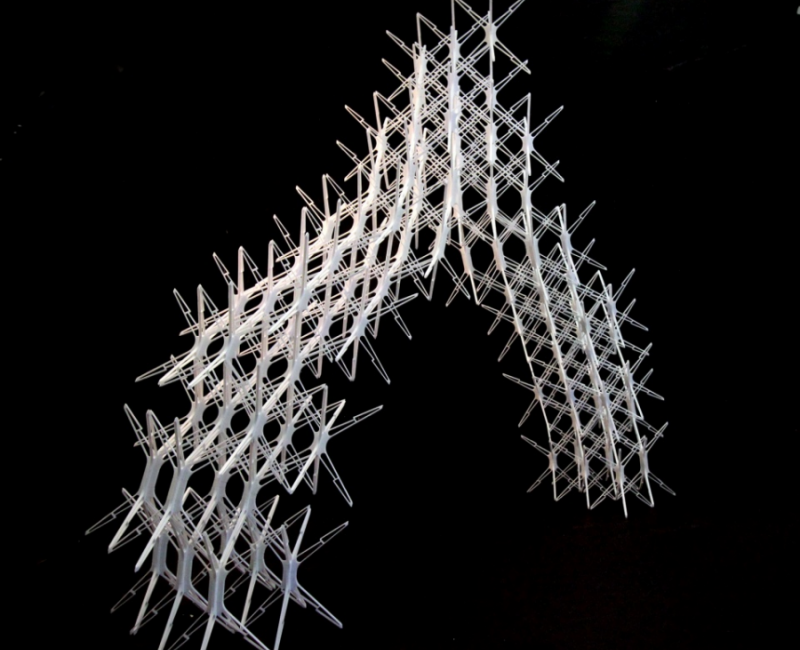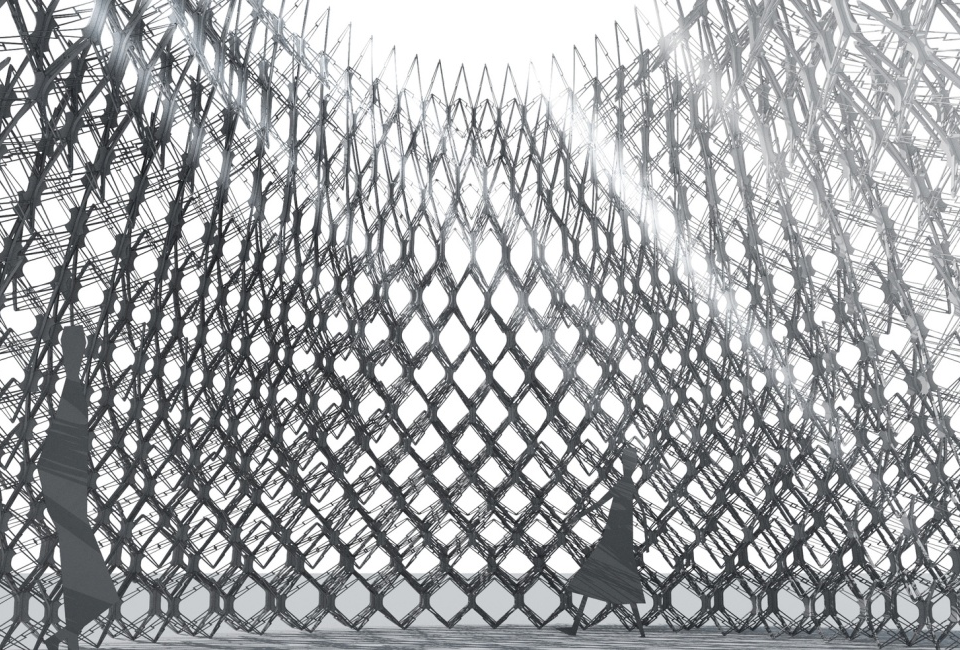Last month, the final winner of 2019 Forge Prize was announced. Established by the American Institute of Steel Construction (AISC) and organized by the Association of Collegiate Schools of Architecture (ACSA), the Forge Prize recognizes imaginative designs showcasing the innovative use of steel. In the two-stage competition, designers across North America vied for the chance to get their proposals selected, using steel as a primary structural component.

2019 Forge Prize kicked off in summer 2018, and until the final announcement of the winner in June, the entire competition took one year – and among the three finalists who made through the Phase I, Jin-Young Song of the Dioinno Architecture PLLC, also an architecture faculty member at the University at Buffalo, because the inaugural winner of the 2019 Forge Prize Grand Prize.
For the competition, Song proposed a steel structural module with a unique, interlocked configuration that allows simple assembly.
How does Song’s proposal explore the innovative potential of steel, and how can it help transform the way the steel industry and the architectural communities perceive and use steel? POSCO Newsroom reports.
l Steel Snaps to a Building?!
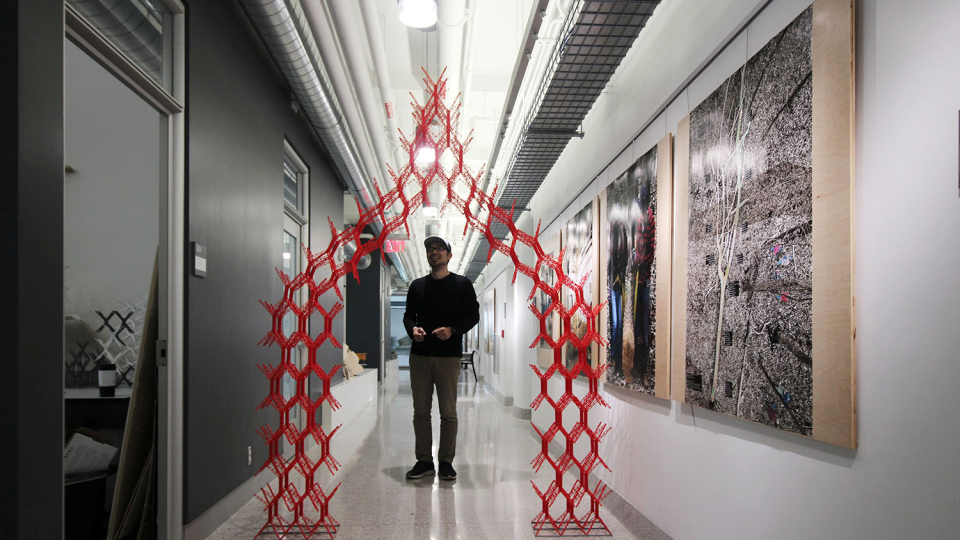
▲ Jin Young Song stands under an arch constructed from his proposal – University at Buffalo (Source: 2019 Forge Prize)
Q: Congratulations on winning the 2019 Forge Prize. Please tell us more about the award and about your entry, SIMS – Snap-Interlock Module System.
A: What intrigued me about the competition call was the two-stage format with seed funding support. Especially, they were seeking innovative ideas to collaborate with industry partners during the second phase.
As an architect and professor in academia, I often find it productive when there is a chance to communicate with the leading industry partner to research, and this was a great opportunity to pursue. From several reviews and meetings, I found that jury members and industry partners appreciated the innovative use of conventional material, discussing the potential of harvesting material property and potential market impact. I believe the winning project, SIMS imposed challenging questions which may open a new direction to ‘smart’ alternative use of steel.
l In SIMS, Steel Bends and Stacks
Q: Since the Forge Prize specifically references and recognizes innovative use of steel, please tell us how the material contributed to your design concept.
A: ‘Stacking’ is a fundamental mode of construction as we imagine the Egyptian Pyramid or walls in Namhansanseong of Korea. Masonry structure has always been a valid construction method and, there are also many diverse forms of non-structural building skin from ‘stacking’ in contemporary architecture.
However, conventional units for stacking – such as stone, brick, concrete units – requires an enormous amount of human effort to maintain structural integrity: from mortar, lateral bracing, to waterproofing, etc.
▲ SIMS: Snap-Interlock Module System (Source: 2019 Forge Prize) (Source: dio Inno Architecture PLLC).
The project started with the idea of ‘stacking steel units’ in the conceptual stage utilizing its lightweight, strong, and precise manufacturing property. And most of all, I focused on the elastic property of steel, which is conventionally considered as a negative phenomenon, to allow a unique interlocking mechanism.
SIMS (Snap-Interlock Module System) is a structural module prototype on the elastic instability of steel, distributing forces through its uniquely stacked and interlocked configuration. The five modules are interlocked as one unit, where the individual steel module is braced with each other. Finite element analysis shows the elastic nature of steel module and confirms structural integrity for building scale.
l Build It, Alone
Q. Now, as for the specific ideation process for the SIMS – how did come up with the prototype, and what are some potential benefits of this module?
A: Recent scholarly interest includes the phenomenon of ‘buckling’ – as we discover in the blooming of flowers or flexible movement of Venus flytrap. Scientists and engineers have begun to learn the elastic phenomenon found in nature. I imagined that this unique snap-interlocking method based on elastic instability of steel would provide an alternative mode of steel framing beyond labor-intense bolting and welding.
As for the potential benefits of the prototype, a single person can receive a box of SIMS parts and build one-story steel pavilion. No special skill required.
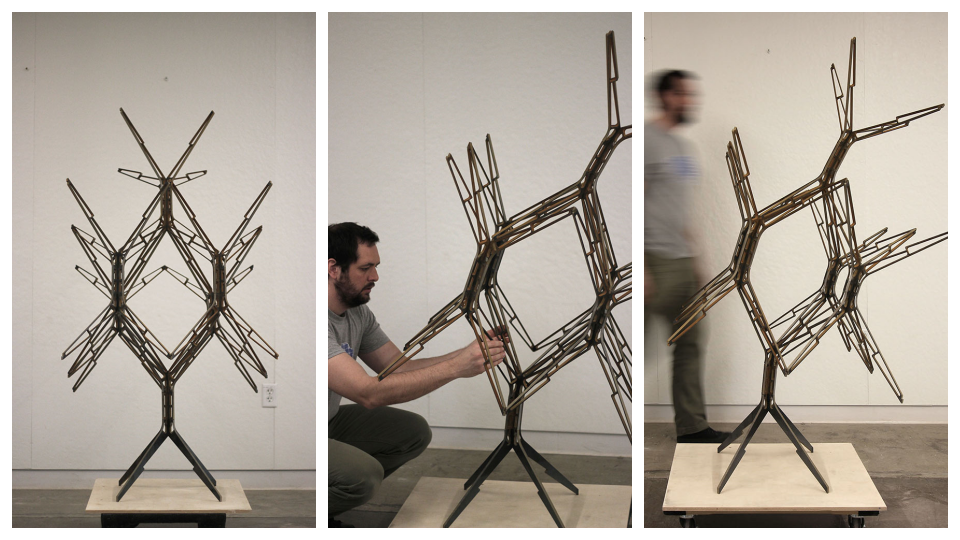
▲ SIMS: Snap-Interlock Module System – a single person can build one-story pavilion. (Source: 2019 Forge Prize)
Q: What architectural concept or steel structure inspires you?
A: I am inspired by Konrad Wachsmann’s steel joint of aircraft hangars for the U. S. Air Force in the 1960s. The joint, how things are connected, is the basis of everything. And his further imagination of the ‘universal joint’ is ambitious and inspirational. His works hint us that there is still a great room for innovation in the way we use steel.
▲ Konrad Wachsmann’s steel joint of aircraft hangars for the U. S. Air Force in the 1960s. German-born American architect Konrad Wachsmann was notable for his contribution to the mass production of building components. He imagined a single, universal structural element which, if mass produced, could be used in building construction for every conceivable purpose. (Source: Atlas of places).
l Building in a Suitcase, Like Lego
Q. How did you feel when you learned you advanced to Phase II? Any anecdotes you would like to share from the competition?
A: Rather than serious funded research, this project has been a kind of hobby for several months. I have developed my interest in this stacking mechanism and improved the design day by day, printing prototype one after the other.
When I learned that the phase 2 presentation of Forge Award would take place at a hotel in Las Vegas as part of AIA National convention, I decided to present the whole pavilion in the showcase by packing all parts into one travel suitcase.
*AIA: American Institute of Architects
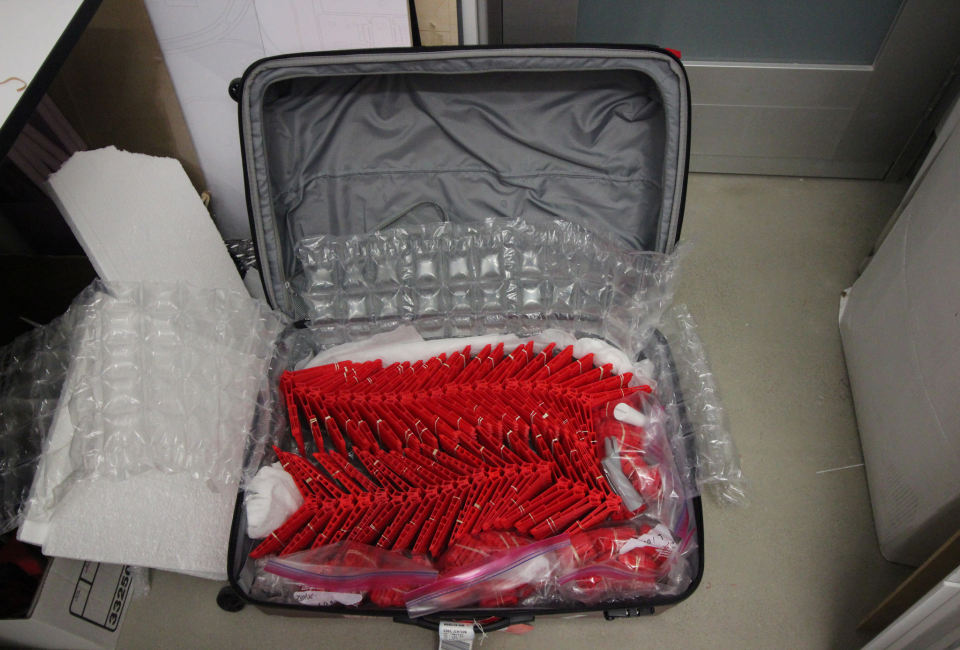
▲ SIMS: Snap-Interlock Module System fits in a suitcase (Source: University at Buffalo)
Additionally, when the organizer informed me that I only had 1.5 hours to install in the conference, I was happy to take the challenge of building the full pavilion in such a short time.
It was a good proof of the concept that we brought everything in only one suitcase and assembled it into a pavilion within that time frame. The fact that the project won the Grand Prize verifies that these communities of engineers, architects, and researchers from the AISC and the ACSA, appreciate the creative research and development effort, therefore this is only a public encouragement for me to keep working on the idea.
Q. What is the commercialization prospect for the SIMS? In your opinion, how do you think the SIMS will transform the landscape of the current construction industry?
A: I think the principle of SIMS can be applied to diverse commercial products in the building industry. Not only the steel-framed pavilion which can be easily assembled and disassembled by one person but also building skin support for solar panels and substructure for the vertical green wall can be commercialized. Temporary display walls for events, flexible fences, and more possibilities can be realized. The ‘steel’ has been always invisible to our eyes despite its critical function in our built environment. However, if we can be more creative about the use of steel, if we use products based on the principle of SIMS, the steel becomes more intimate material closely attached to our life. This also supports our current cultural paradigm, the rapidly changing culture in the city, and the eventful street with flexible and mobile architecture where I believe the ‘steel’ can play a critical role.
Q. Now that the competition has ended, is there any other project you would like to further work on?
A: There is a research project I led with engineers at SOM (Skidmore, Owings, and Merrill LLP). We explored steel-based structural skin for tall towers, the Emboss Tower.
The major diagrid system with a secondary embossed surface structure provides an enhanced perimeter structural system by increasing tube section areas and reduces wind loads by disorienting major organizing wind forces. I believe this tower shows the potential of steel in the structural skin application, and I would be excited to explore further.
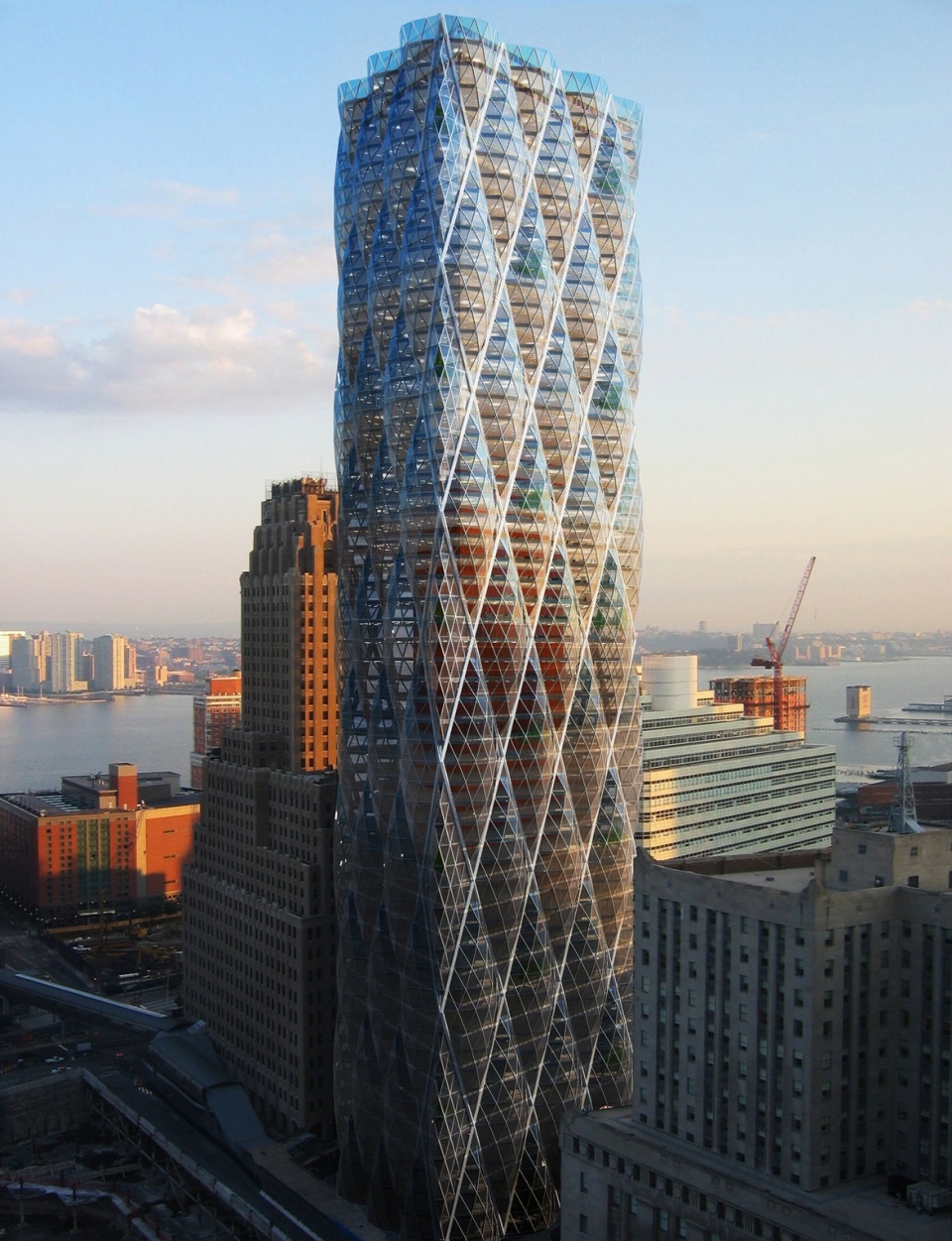
As someone acutely aware of the inherent human-spatial connection, Song believes – while commercialization and global market force in the building industry advance our well-being, simultaneously, it can be limiting – just as in the way coffee shops, multiplex cinemas, shopping malls, and big-box grocery markets are all similar in many global cities – be it Seoul or New York City.
But Song believes innovative opportunities like the Forge Prize where architects collaborate with industry partners, can help explore enormous potential of human-spatial connection as well as building materials, like steel. As one such industry partners, POSCO will continue the endeavour to support innovative communities and creators like Song.









